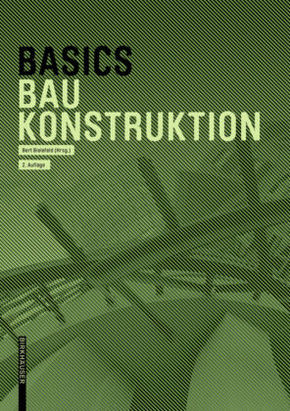| Verlag | Birkhäuser Berlin |
| Auflage | 2021 |
| Seiten | 408 |
| Format | 15,8 x 3,0 x 22,2 cm |
| Großformatiges Paperback. Klappenbroschur | |
| Gewicht | 850 g |
| Reihe | Basics |
| ISBN-10 | 3035623155 |
| ISBN-13 | 9783035623154 |
| Bestell-Nr | 03562315A |
Jede Konstruktion unterliegt speziellen Eigenarten, die in ihrer Bauweise nicht mit anderen Baustoffen zu vergleichen ist. Die ersten baukonstruktiven Entwürfe im Architekturstudium werden als Mauerwerks- oder Holzbauten geplant. Anhand dieser beiden traditionellen und elementaren Baustoffe erlernt der Studierende die baukonstruktiven bzw. statischen Prinzipien, die auch die Grundlage für die Konstruktion mit den "modernen" Baustoffen Stahl, Beton und Glas bilden.
Klar gegliedert und konzentriert, erläutert Basics Baukonstruktion die Eigenschaften dieser wichtigsten Konstruktionsmaterialien. So vermittelt der Band das nötige Wissen über die gebräuchlichsten Konstruktionssysteme, deren Regeln und Anwendungen und versetzt den Architekturstudenten in die Lage, selbst über kreative Lösungen auch außerhalb der standardisierten Angebote der Bauindustrie nachzudenken.
Dieses Kompendium vereint die erfolgreichen Einzelbände Holzbau, Mauerwerksbau und Glasbau der Reihe BASICS in einem Buch, das um die zwei neuen, bislang nicht erschienenen Bände Stahlbau und Betonbau ergänzt ist.
Each type of construction has its special characteristics which cannot be compared with those of other building materials. The first building construction designs in the architectural curriculum are planned as masonry or timber buildings. On the basis of these two traditional and elementary building materials, students familiarize themselves with construction details and structural principles, which are also the basis of construction with "modern" materials such as steel, concrete and glass.
Basics Building Construction is clearly structured and focused, and explains the characteristics of these important construction materials. The book familiarizes the reader with the most common construction systems, their rules and applications, and enables architectural students to contemplate creative solutions that may also be outside the standardized solutions offered by the construction industry.
This compendium combines the successful individual volumes Timber Construction, Ma sonry Construction and Glass Construction of the BASICS series in one book, which has been expanded by the two new, hitherto unpublished, Steel Construction and Concrete Construction volumes.

